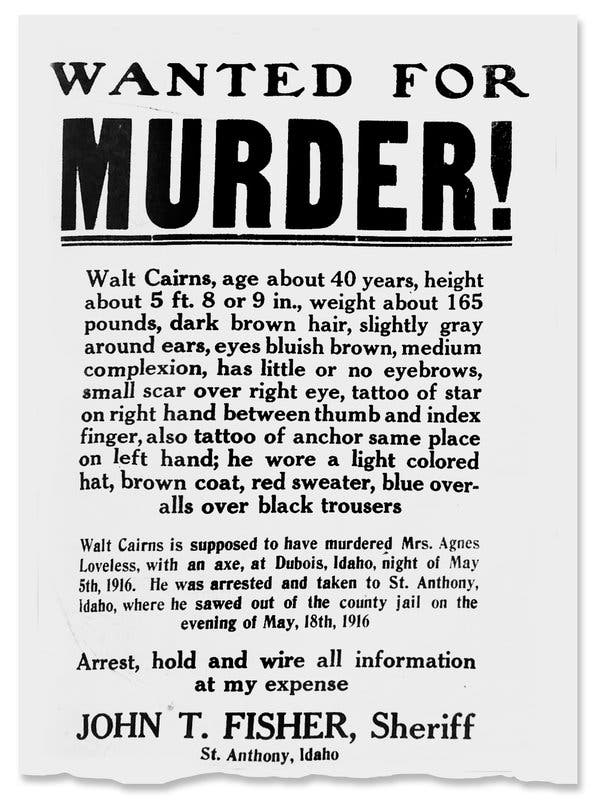Headless Axe Murderer of 1916 Found Dead and Headless
Joseph Henry Loveless Body is Found In a Cave In Idaho
January 9, 2020
A 1916 axe murderer, Joseph Henry Loveless, is found dead and headless in a cave in Idaho. He had escaped jail by hiding a saw in his shoe which he used to cut his way out of his cell.
He had been sentenced to jail for the murder of his wife, he had “beaten her brains out with his ax,” according to a news paper in Idaho. At his wife’s funeral in 1916, one of his children said, “Papa never stays in jail very long and he’ll be out soon.” Then, just as the child had said, he later escaped with the “saw in a boot” trick.
After months and months of officials looking for him, the old 1916 Ax murderer Loveless was never able to be found. On August 26, 1979, a family searching for arrowheads in a cave in Idaho found what was suspected to be Loveless’ torso. Then again, on March 30, 1991, an 11 year old playing in the same cave found a hand which was found to also belong to Loveless. Officials began to look around and found an arm and two legs. They continued to search to find his head but was never able to find it.
The DNA Doe Project researchers said the DNA they used to identify the body is high quality and very unusual for such an old body. A sock officials found was so new it looked like a sock anyone could have sitting around at their house. Justin Joe of Full Gnomes suspects the unusually good condition of the DNA and sock could be because of the conditions of the volcanic cave. Samantha Blatt, a Bio Archeologist, says “the temperature of the cave sand— around 37 Fahrenheit — might have contributed to the fact that the mummified remains retained an odor of decomposition, which was rare after so many years. Also, his sock was almost perfectly preserved.”
“It’s a complete sock,” she continues, “It looks like it could be from my house.”
The DNA Doe Project are still working with the Ax Murderer Loveless’ story and have put together a picture of what he may have looked like in 1916 with help from family pictures and DNA.




